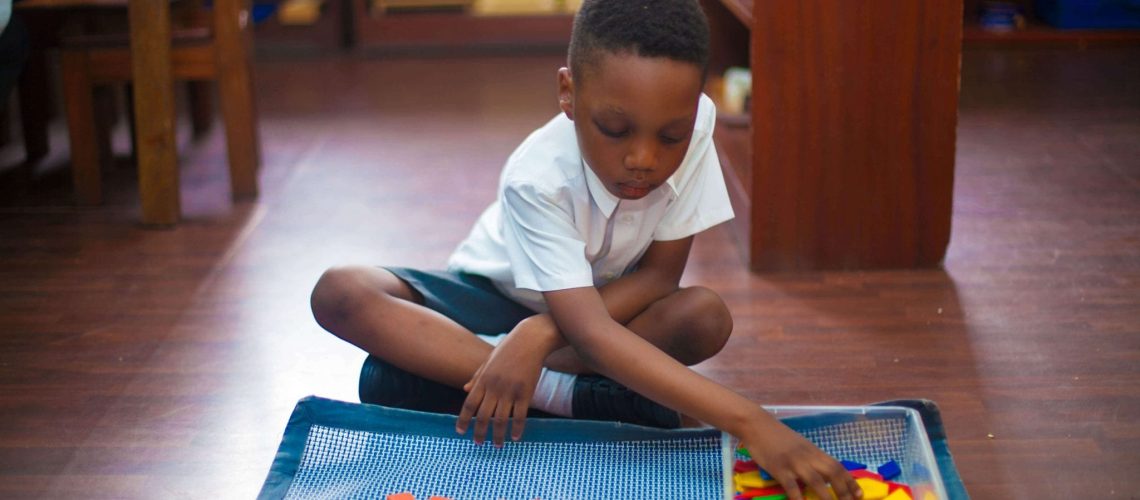How we speak to children has a lot to do with how they hear us.
For example, to prevent children taking work off the shelves before receiving presentations you could say,
“We only use materials after I have shown you how to use them.” Notice that this is a positive statement that tells the children when they can use the materials. They are not told that they cannot use the work. Dr. Silvia Dubovoy (Dubovoy, 2017) uses the phrase “In this place, …” to let children know “Yes, I know there are other rules for you elsewhere, but in this place, we do this.”
Here are some examples.
Negative: We don’t… Positive: In this place we…
- We don’t run. In this place, we walk carefully.
- We don’t shout. In this place, we speak quietly.
- We don’t carry all of that at the same time. In this place, we carry things one at a time.
- We don’t leave our work on the floor. In this place, we return our work to the shelf.
- We don’t interrupt. In this place, we wait our turn.
- We don’t hit. In this place, we keep our hands to our own bodies.
- We don’t get out of our chair at a restaurant. In this place, we stay in our chair.
Montessori Principles: Setting Limits with Positive Statements
Do you hear the difference? If you were learning the rules of a new place, which language would you rather hear? The child can argue with the statement “We don’t run.” However, she cannot argue with the explanation of “In this place, we walk carefully.” By using positive, exact language you become a firm, gentle, and rational authority who is building a relationship based on trust.
Now, let’s look at some less obvious negative statements. Often, we think we are using positive language but really, we are giving commands and asserting our authority. Dr. Dubovoy uses the following example:
Sit down; it’s time to eat.
versus
We will eat when you are seated.
In the first statement, we are telling the child what to do. There isn’t any choice or freedom to choose: I am the adult, and I make the rules for you to follow, no questions asked. In the second example, the child has the choice of when to be seated. He knows we will wait until he is ready. There is no need for a power struggle because the child now has the freedom to choose.
Let’s try some more examples.
Command Choice
- Be quiet; it’s story time. When you are quiet, I will read you a story.
- Put your coat on; it’s cold outside. When your coat is on, we will go outside.
- Eat your dinner; it’s time to clean up. When you are finished eating, we can clean up.
- I’m not leaving until your shoes are on. When your shoes are on, we can go to school.
- Brush your teeth; it’s time for bed. When you’ve brushed your teeth, I’ll come tuck you in.
Using language that is positive and respectful but firm guides children to want to behave, without the adult having to constantly watch and wait for them to break the rules. You are setting the tone for a positive outcome. You are clear with your expectations as well as with the outcome of their choice.
There are definite rules in life, and having rules isn’t bad. Rules are actually quite necessary to raise happy, independent, well-adjusted children, who become happy, independent, well-adjusted adults. When we understand what we want in our environment and we are express and model that in a clear and respectful manner, our children are able to make wise choices about their own behaviour.

